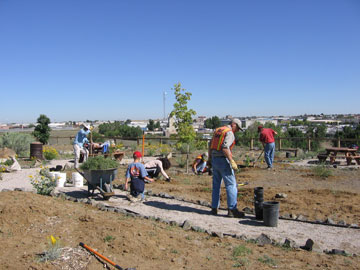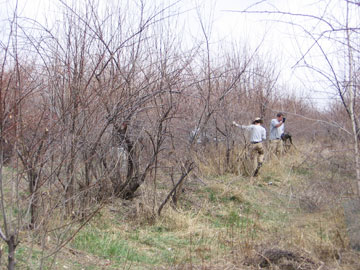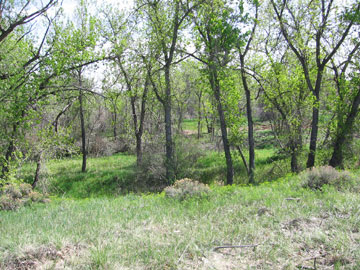Bluff Lake and Denver Botanic Gardens: a partnership to heal the earth

Denver Botanic Gardens has been involved in restoration of damaged ecosystems around the state of Colorado through its Research and Conservation programs for at least a decade, but none have been quite as satisfying as the one at Bluff Lake Nature Center. "Over the past four years Bluff Lake Nature Center staff and volunteers have removed hundreds of Russian Olives and numerous tamarisk from around the site and along Sand Creek. We estimate that within the next two years Bluff Lake will be completely free of these invasive tree species," says Bluff Lake Site Manager (and former Denver Botanic Gardens horticulturalist) Chris Story. THE HISTORY: The partnership between the two organizations began in 2003 when the Research Department at Denver Botanic Gardens was looking to put volunteers on meaningful conservation projects. Steve Norris at Bluff Lake Nature Center had a great opportunity and a great need to do restoration work there. Denver Botanic Gardens volunteers Susie Crane and Barry Levene took on the leadership role of researching the goals of the site and how to match restoration practices to meet these goals. In 2003, Susie and Barry began assembling an official weed plan for Bluff Lake. Denver Botanic Gardens staff assisted in gathering information and linking the volunteers to professionals who could give advice.


Since then, Susie and Barry have led a group of volunteers to tackle everything from bindweed to Russian olive. Susie says, "Early efforts were hit or miss. We didn’t know anything, had no tools, no chemicals. The first time we planted forbs out at the site the rabbits ate them all. A donor paid for Rick Brune to do a plant survey in 2004. That was the turning point. He mapped plant communities on the entire site. We found weeds we didn't know we had as well as natives not known to be there." The program has continued to expand over the years. Chis Story explains, "We have also begun to expand our garden area with donations form local nurseries and with plants propagated at DBG from seed collected at Bluff Lake. We have interns from Metro State, and the Denver School of Science and Technology creating an herbarium for Bluff Lake with duplicate specimens mounted for DBG. We have collected and mounted over 120 species so far." Yesterday, Denver Botanic Gardens Associates toured these projects in a formal program. Bluff Lake Nature Center is open to the public and organized tours are welcome. For more information about restoration projects by Denver Botanic Gardens, see our website, under 'Conservation and Research'.
This blog post was written by Anna Sher, Ph.D., adjunct researcher and former director of the Research & Conservation Department at Denver Botanic Gardens.
Add new comment